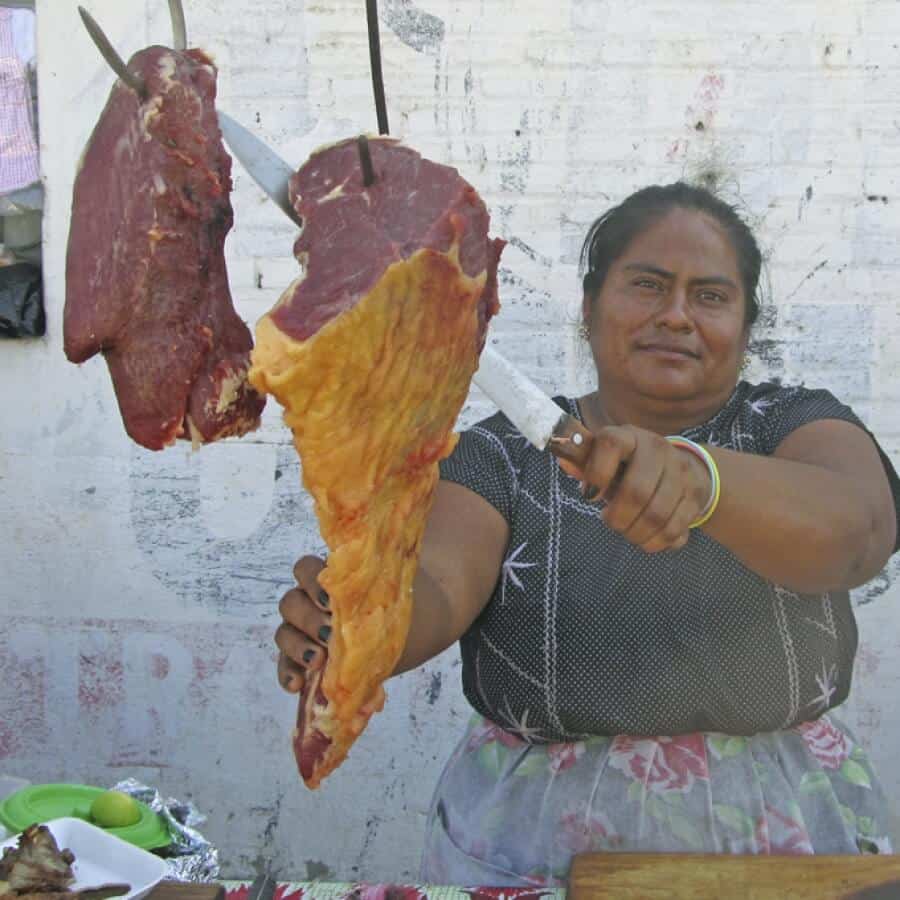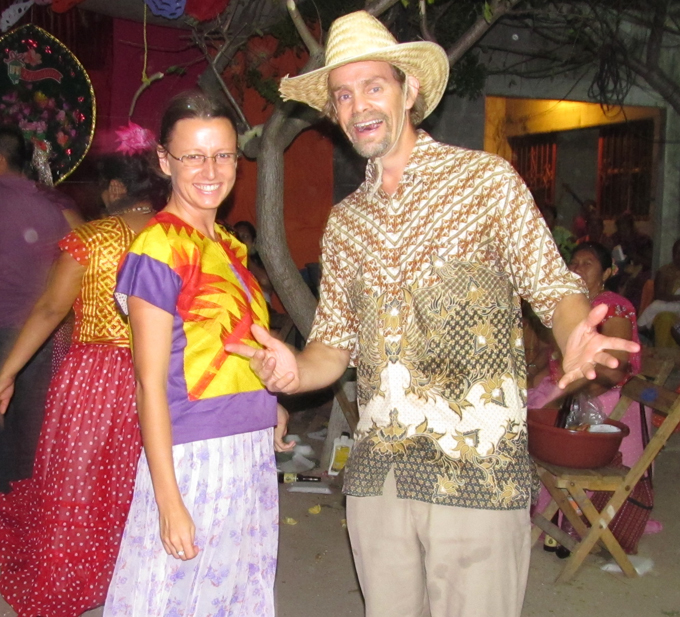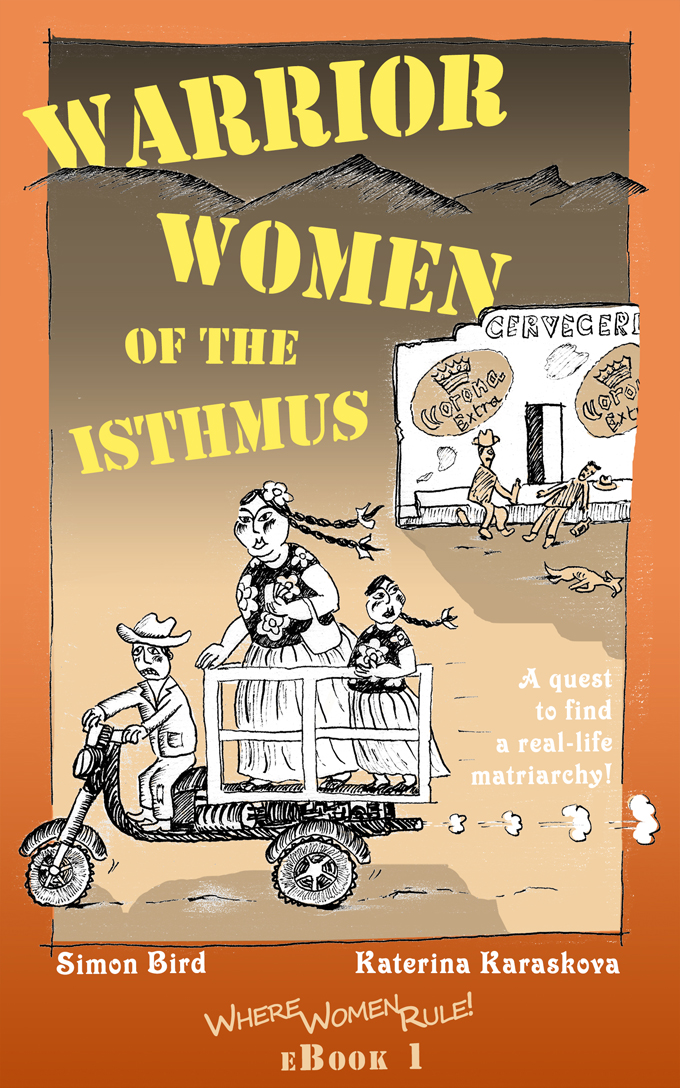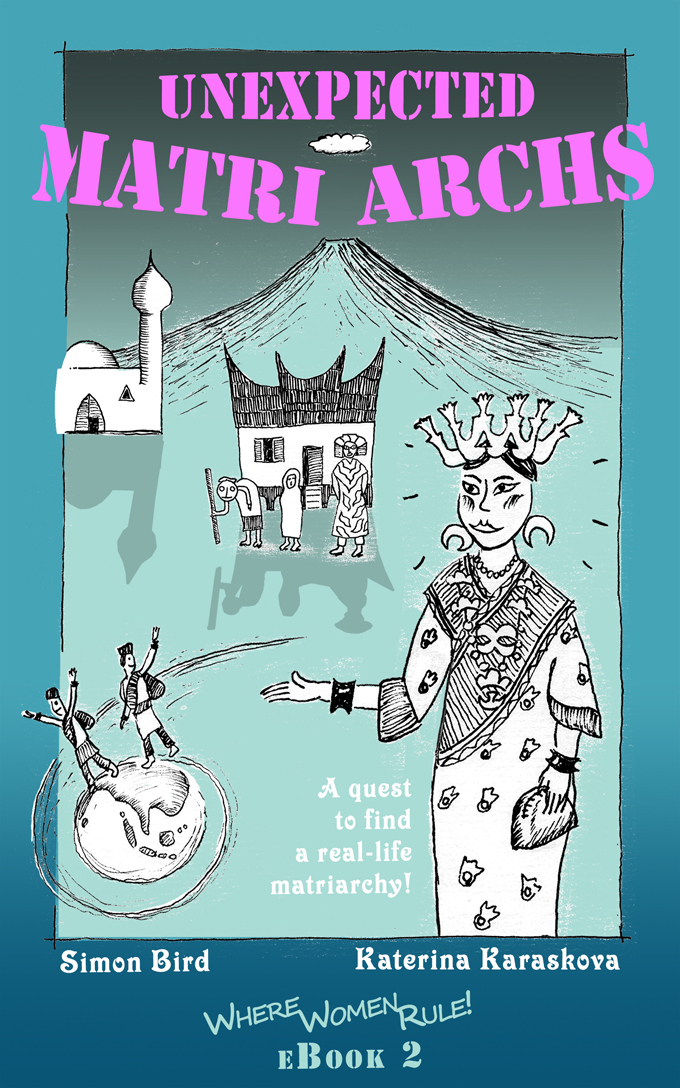Kateřina Karásková is a lawyer and human-rights activist from the Czech Republic. She has lived in Guatemala with Mayan Indians who have survived genocide; she has started a hospital and managed schools in needy areas of Uganda; and she has overseen environmental and agricultural projects in Kenya. Together with her partner, Simon Bird, she has written and illustrated a book titled "Kde ženy vládnou", which has been published in the Czech language. Simon is an artist from East Devon in the United Kingdom. For the last twenty years he has travelled the globe and created arts-based projects with indigenous tribes. Together with Kateřina, he has written and illustrated a series of four eBooks called "Where Women Rule!"
Kateřina Karásková and Simon Bird
The subject matter of your book is complex, endlessly fascinating, and thought-provoking. How would you describe matriarchy and patriarchy considering their historical roots and their roles in different societies?
Patriarchy is quite well understood globally I think, because most countries have men in charge of business, politics, and over the family! With matriarchy, however, the concept is a little more difficult to grasp, because there have been many different interpretations of the term.
In Greek, matriarchy simply means ‘Rule of the Mother’. In 1861, the Swiss historian Johann Jakob Bachofen was the first person to claim that matriarchy had actually existed in the historical past. In his book Das Mutterrecht (Mother’s Right), he described one of the early phases of human evolution as a period when women played a central role in society.
Although there is no concrete proof for this, Bachofen’s book did inspire others to engage in the subject. The Marxist intellectual Friedrich Engels argued in his book The Origin of the Family, Private Property and the State (1884) that the oldest form of family was something called ‘Group Marriage’. He believed that in the remote past women owned children collectively and had a certain level of control over men.
Engels also came up with a theory as to how women eventually lost this power. He said it all began with the onset of farming and the gathering of possessions, which also happened to coincide with men apparently learning how babies were born! Children were then claimed as the men’s property, and women were enslaved into strictly monogamous marriages. So began the period of ‘Father’s Right’, known today as patriarchy.
According to the modern anthropological establishment, though, there is still no conclusive proof that matriarchy has existed in the past, or in the present for that matter. Due to this ambiguity, we use the word in the broadest possible sense, meaning roughly: women have more control than men over the family, children, money, and politics. These four parameters have become the basic requirements for our quest to find a real-life matriarchy.
The four prospective matriarchal societies we visit are:
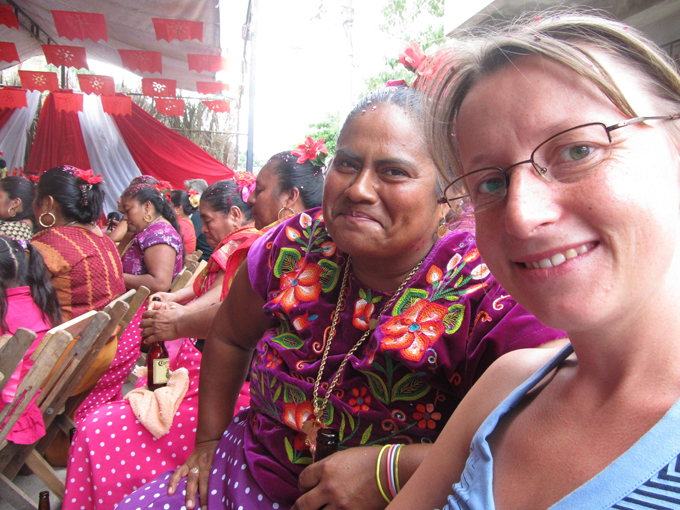
Isthmus Zapotecs_MEXICO
The Isthmus Zapotecs of Southern Mexico, where the feisty charm and entrepreneurship of the indigenous women have allowed them to rise above the men and become national icons in Mexico.
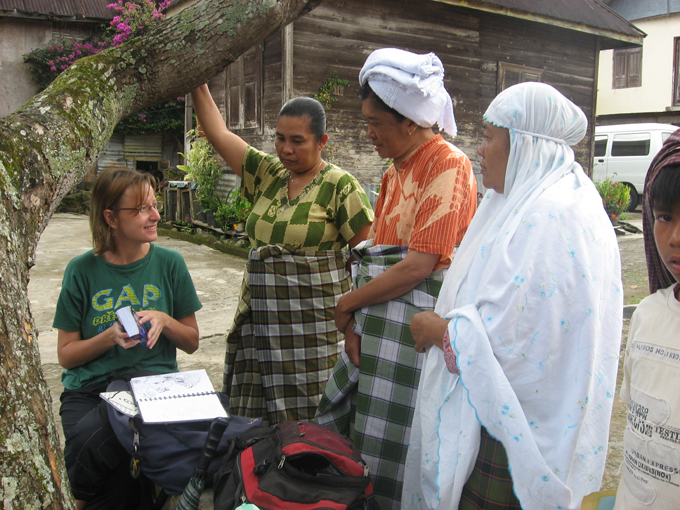
Minangkabau_INDONESIA
The Minangkabau of West Sumatra, where although the culture exists within the Islamic society of Indonesia, local traditions have prevailed, giving the women unexpected privileges within the community.
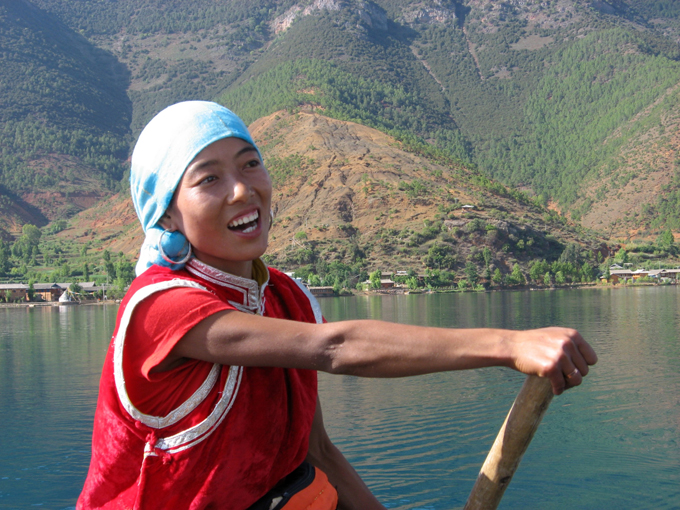
Mosuo_CHINA
The Mosuo of Southwest China, where the tribe has become a major tourist attraction, officially promoted as a ‘Kingdom of Women’, but unofficially tagged a sex theme park!
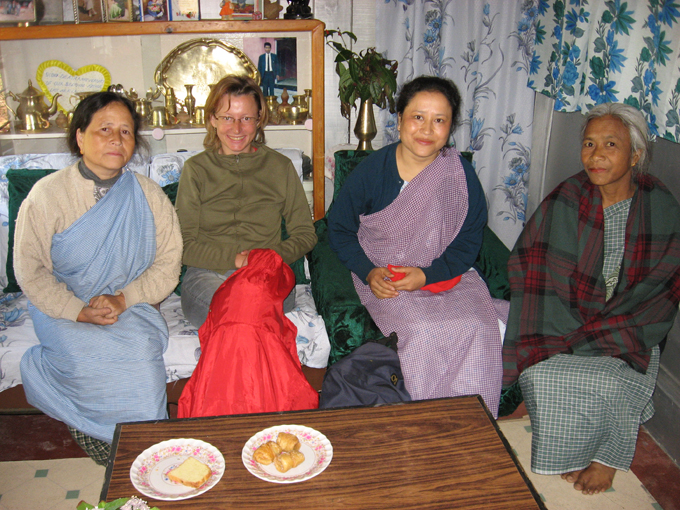
Khasi_ INDIA
The Khasi of Northeast India, where women enjoy such powers over their husbands that the men have set up male rights groups and are desperately campaigning for equality.
For a person used to the concept of the ubiquitous and unenviable position of women, the idea of the matriarchal system is unusual. Tell us more about the Khasi and their fight for equality.
Men from the Khasi tribe fight openly for male rights. In a way they could be compared to the suffragettes in Europe and America 100 years ago, because it really seems they are fighting an uphill battle with the women.
In Khasi society daughters inherit family property, and when they get married the husband goes to live in her house, where she is the boss. Any children produced are owned exclusively by the wife and take her surname. On top of this, she is free to divorce whenever she wants – by simply throwing some money out of the window – the husband then has to leave with nothing but a suit case, a coat, and a hat!
We visited two male rights groups in the Khasi Hills and found out that they are not doing very well at all. They told us the main problem is that the men are too afraid to speak up, because they don’t want to fall out with their wives and get kicked out of the house! Another reason is that lots of men actually support the women, so if they complain they may be persecuted by other men in Khasi society.
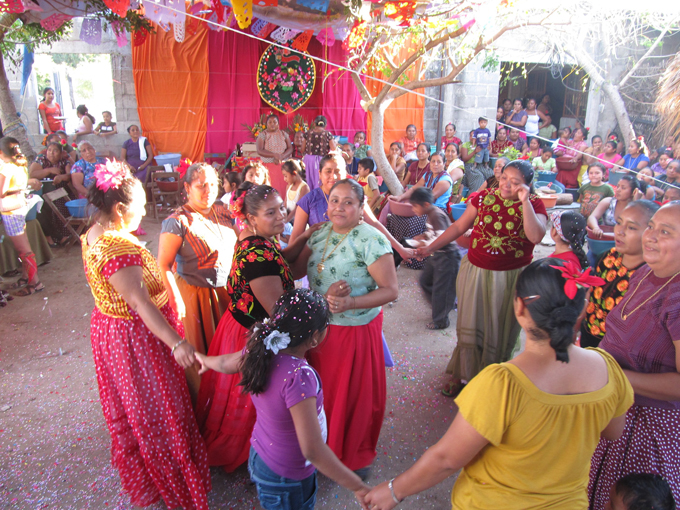
Isthmus Zapotecs_MEXICO
So is it similar to – but the reverse of – the patriarchal system, or are there some core differences? For example in patriarchal cultures it is accurate to say that property ownership served in part as a basis for assuming households (children and wives) were possessions. Does the link exist between the feeling of possession and gender in matriarchal societies?
Not really. Matriarchy isn’t the exact mirror image of patriarchy as we understand it. So, in our books we try to use more specific anthropological terms to evaluate the balance of power in these cultures. Here are the main terms explained:
Matrilineal name: The surname or clan name is passed from mother to children. The opposite is the patrilineal system, where children receive the father’s name.
Matrilineal inheritance: Family property is passed from mother to daughter. The reverse is patrilineal inheritance, from father to son.
Matrilineal system: A generic term for both or either, matrilineal name and/or matrilineal inheritance.
Matrifocal family: The wife is the head of the household and children, and often manages the family purse. The husband plays a lesser role within the family.
Matrilocal residence: After marriage the husband moves to the wife’s family home.
Without prejudging, there is a community of Matriarchal Muslims? What would you say about it?
Ah… The Minangkabau! They live in West Sumatra in Indonesia, and are officially the largest matrilineal society on the planet, which is really quite something considering today’s paranoia about Muslims.
Minangkabau women are not only free to receive a good education, but can also work in whichever job they please. They are traditional family leaders, play joint roles alongside the men within the community, and take charge of business and finance.
On our journey through their culture, we found them to be very friendly and inspiring people. They dispelled all the prejudices you normally associate with Islam, so much so, that I felt we could all learn from their progressive and tolerant attitude.
A woman / girl you interviewed, of Muslim background but a Minangkabau, said she was happy to be a woman. What is their appreciation of being a woman based on?
Yes… that girl was Ari. She was happy to be a girl, because she will inherit a family house and also have the freedom to complete her university degree in Biology.
“If my brother accepted anything from my parents it would be a big embarrassment for him, as it is his sister’s right,” she said to us proudly.
Minangkabau society follows both matrilineal name and matrilineal inheritance customs, and incredibly the Muslim men accept it without question. Most of the women and girls we spoke with appreciated the freedom they have in society. To us, it seemed amazing that Muslim girls could live their dreams of becoming highflying career women, or disappearing to travel the world, just like normal student girls in the West would do.

Cover of the book: Where Women Rule
Where did the idea of ”Where Women Rule” (Czech original: Kde ženy vládnou) originate?
I can track that back easily. When I was working as an intern with Womankind Worldwide in London, I saw a man giving a talk on female empowerment, and was convinced all feminist issues should be marketed by men.
“Umm… that’s a great idea,” my boyfriend Simon said, and then he suggested that male rights could also benefit from being marketed by women.
“As if men really need extra rights!” I retorted.
“But in matriarchal cultures – men do need rights!” Simon joked.
I then typed the word matriarchy into Google, but amusingly the search suggestion came up, ‘Did you mean patriarchy?’
This enraged me so much that I declared I was going to find all the cultures on the planet where women rule, and so our project was born!
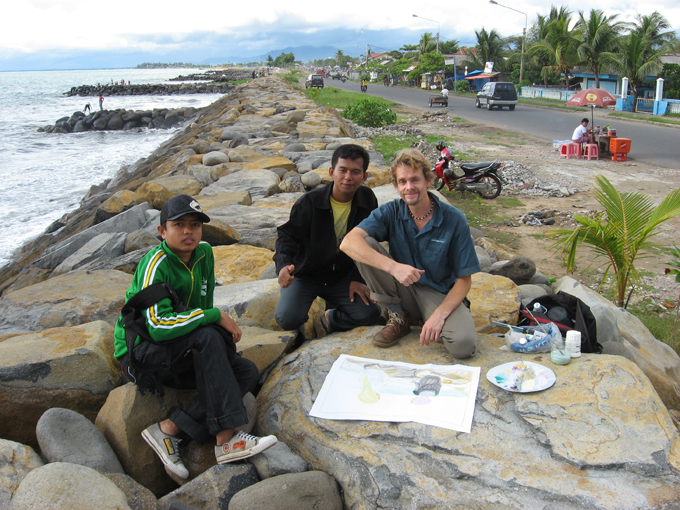
Simon painting with Minang men in Indonesia
Simon Bird is also the co-author of the book. How did he take the idea of visiting and writing about women who rule? Did he feel secondary?
Yes, for sure! To begin with he joked that these places can’t really exist, but when he saw I was serious he suddenly started to become competitive. He even organised the first journey we went on. So, you could say it’s easy to get a man interested in feminist issues – you only have to imply that he isn’t up to the challenge!
How did “the modern Amazonians” like him?
In Mexico, in the markets of Tehuantepec, the big Isthmus Zapotec women loved him! I would even say they especially enjoyed putting me down in front of him. I remember one incident when Simon and I were sketching the women selling flowers and chickens, and he got all the compliments and I got none!
“The gentleman knows better,” the chicken woman said. “If he did the picture of me it would be much better. Can you come tomorrow?”
I got so annoyed that the market women sided with him that I had to leave.
I admit that the idea of a matriarchal market did not live up to my expectations. It was like they saw female tourists as competition and felt compelled to put them down, rather like men do to each other when vying for macho supremacy in a bar.
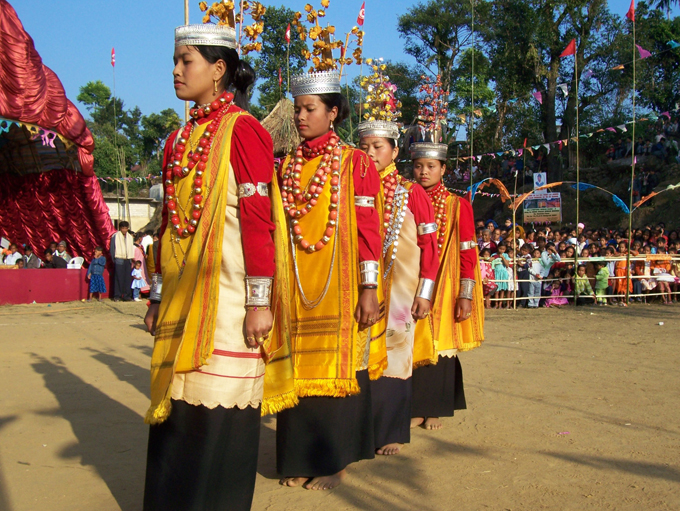
Khasi_ INDIA
Western patriarchal cultures are moving towards a greater balance in gender and tolerance. Did you observe any version of this direction in the matriarchal societies you visited?
Not really… Maybe only with the Khasi culture in India, where the male rights leaders were desperately trying to instill Western values to help justify their campaign.
With the Minangkabau of Indonesia, they were more influenced by the commercial elements of Western culture. The Islamic religion was also trying to impose stricter measures upon the women – but mostly unsuccessfully.
In the Mosuo culture of China, it was the issue of tourism that was challenging the balance of power between men and women the most. This was because Han Chinese businessmen were taking over hotels and channeling the money away from the locally run tourist industry.
With the Isthmus Zapotec of Mexico, they were up against the macho influences from the rest of the country. But the traditional women, who are all very loud and outspoken, seemed to brush any threats aside easily with their well-trained matriarchal state of mind.
What are your plans for the future?
I am having a baby this summer, so I will probably be a little occupied, but hopefully in the future we will continue our hunt for alternative social structures around the world. Simon is finishing the last two eBooks of the Where Women Rule series in English. My book is already out in Czech: Kde ženy vládnou.
EBook 1:
EBook 2:
EBook 3 and 4 coming soon!
Photos: Kateřina Karásková
Support us!
All your donations will be used to pay the magazine’s journalists and to support the ongoing costs of maintaining the site.
Share this post
Interested in co-operating with us?
We are open to co-operation from writers and businesses alike. You can reach us on our email at [email protected]/[email protected] and we will get back to you as quick as we can.
